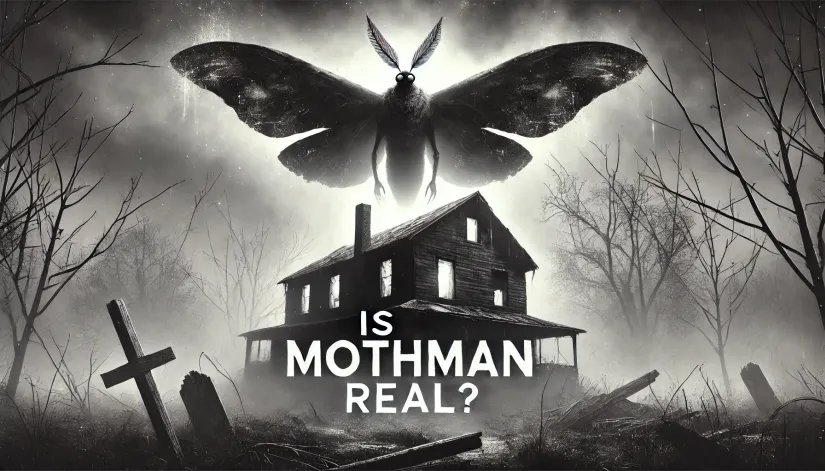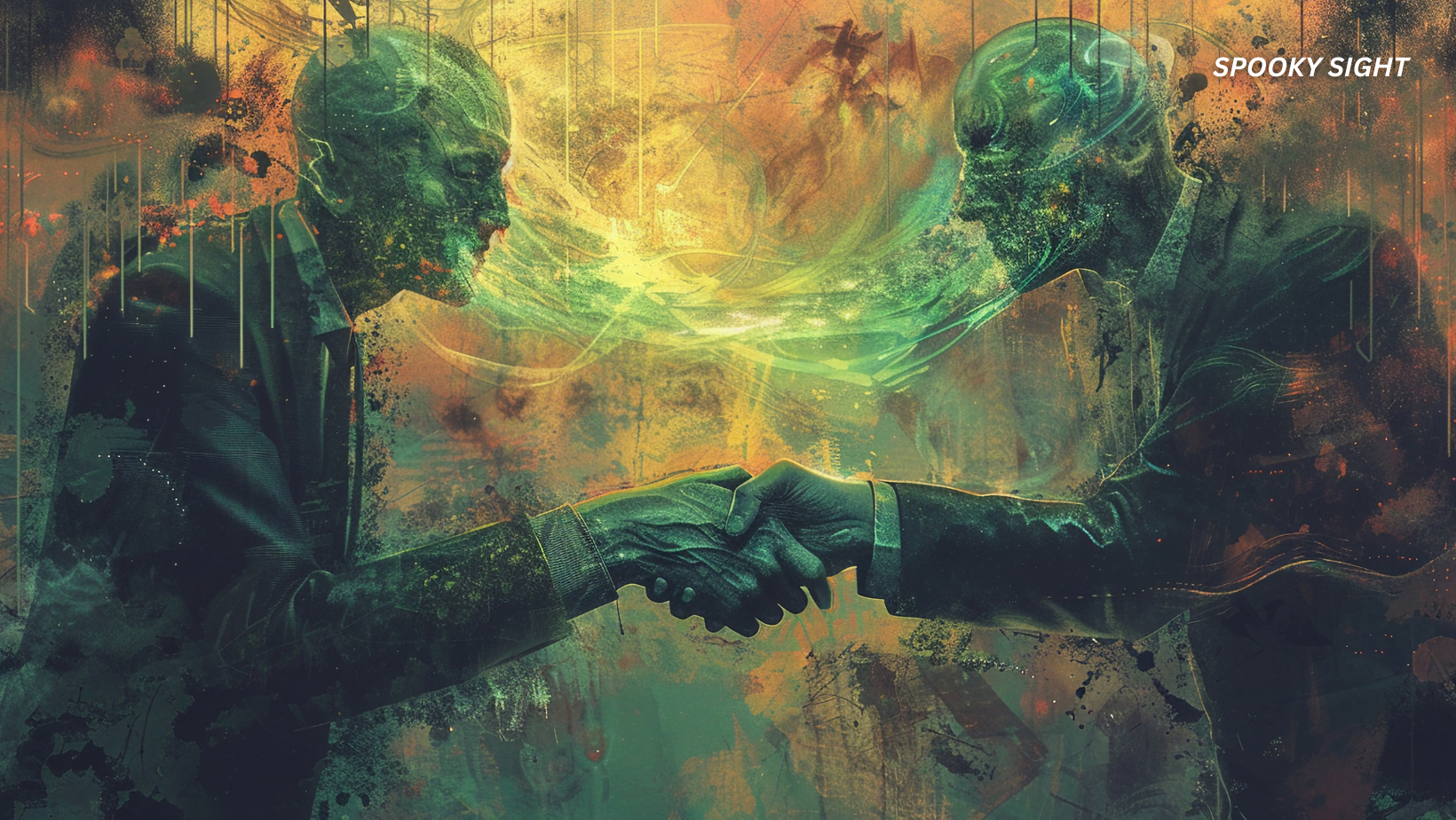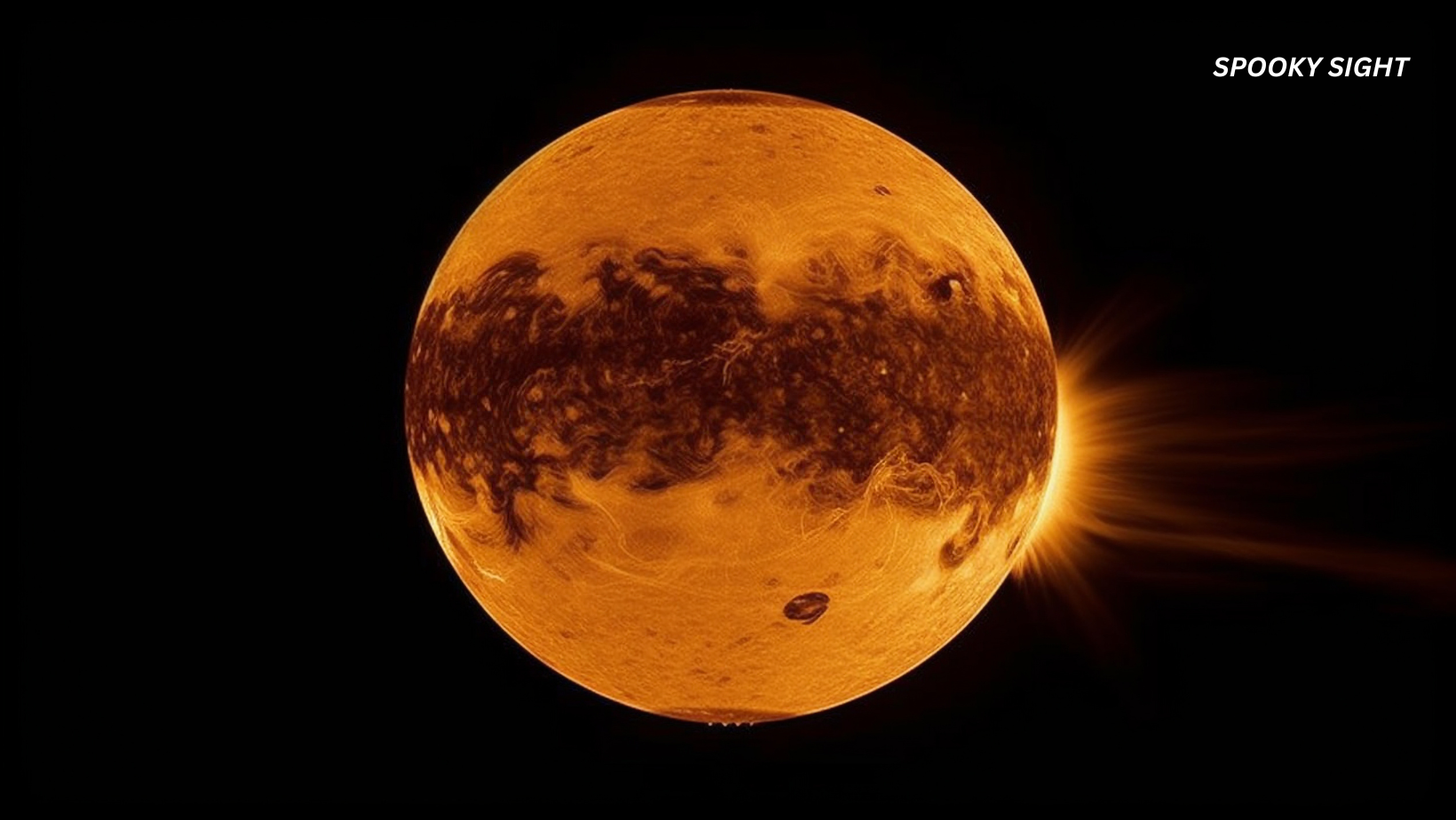What’s the real story behind the strange, winged figure with glowing red eyes that haunted a small American town in the 1960s? An omen of disaster? Extraterrestrial being? Or perhaps just mass hysteria, as some claim?
Decades later, the Mothman is still one of the most controversial cryptids of all time.
In this article:
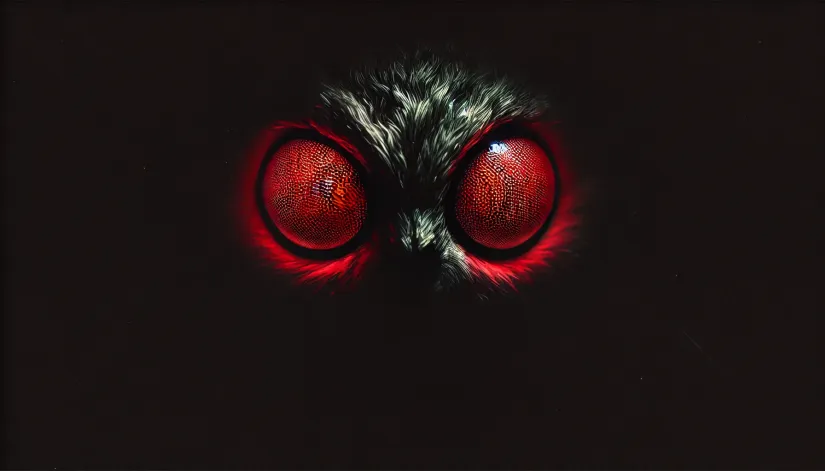
Mothman’s Origins
The Mothman legend began on a cold night—November 15, 1966—in Point Pleasant, West Virginia. Two young couples—Roger and Linda Scarberry, and Steve and Mary Mallette—encountered a bizarre creature while driving near the TNT area (a former World War II munitions plant).
The ammunition factory (officially known as the West Virginia Ordnance Works) was built during World War II (1939-1945) and abandoned after the war ended. But interestingly, the place always had an eerie reputation among locals.
Many residents felt a sense of unease around the place, attributing it to the dark history of explosives production and the dangerous chemicals left behind. With its crumbling buildings and creepy concrete bunkers, the overgrown site seemed almost alive with an ominous presence.
Related: Is the Dover Demon Real? UFOs, Cryptids, or Hoax? The Full Story
There were even stories about strange lights, odd noises, and the unsettling feeling that you were being watched.
On that night, the four individuals reported seeing a creature with glowing red eyes and a wingspan of about 10 feet. The “monster” chased their car along Route 62, reportedly reaching speeds of over 100 miles per hour.
Luckily, they managed to escape to town. There, they reported the incident to Mason County Deputy Sheriff Millard Halstead.
The next day, on November 16, 1966, the Point Pleasant Register (a local newspaper) published their story with the headline, “Couples See Man-Sized Bird… Creature… Something.”
After the article’s release, more Point Pleasant residents came forward with similar stories. Most claimed to have seen the same strange creature lurking near their homes. Others reported hearing unusual noises around or inside the ammunition factory.

The Silver Bridge Collapse
On December 15, 1967, during the busy evening rush hour, the Silver Bridge—which connected Point Pleasant, West Virginia, to Gallipolis, Ohio—suddenly collapsed into the Ohio River. The collapse resulted in the tragic deaths of 46 people, making it one of the worst bridge disasters in American history.
The bridge—constructed in 1928—suffered from structural failure due to a defect in one of its suspension chain links, which eventually gave way under the increased load of modern vehicles.
The specific cause was a defect in an eyebar—a critical component of the bridge’s suspension system. This defect, which developed over time, caused one of the eyebars to crack and fail.
Related: Is the Flatwoods Monster Real? An In-Depth Investigation of the 1952 Sighting
Since the bridge was designed without redundancy (meaning that if one part failed, the whole system would be compromised), the failure led to a catastrophic collapse under the weight of the heavy rush-hour traffic.
This failure was worsened by the increased load of modern vehicles, which were much heavier than the vehicles the bridge was initially designed to handle when constructed in 1928.
The sudden disaster shocked the local community. And many couldn’t help but draw a connection between the Mothman sightings and the collapse.
How so? Because the Mothman sightings had started on November 15, 1966, and continued all the way up until the bridge tragedy on December 15, 1967. Precisely 13 months.
John Keel (an investigative journalist and author) documented these events in his 1975 book, “The Mothman Prophecies.” Keel’s research included many interviews with eyewitnesses. Based on these stories, Keel connected the mysterious creature to other paranormal occurrences in the area.
Where Has the Mothman Been Seen?
The TNT area was just one of the locations linked to Mothman sightings in the late 1960s. But it wasn’t the only place people claimed to see this mysterious figure.
On November 16, 1966, just one day after the Scarberry and Mallette sighting, another report came in from Salem, West Virginia. Here, a local contractor named Newell Partridge claimed to have seen a large, winged creature with glowing red eyes.
According to Partridge, he saw the monster near his barn. His dog, Bandit, ran off after it and was never seen again.
Other sightings were reported around the Ohio River, including one in December 1966 by Marcella Bennett. She was visiting friends near the TNT area when she saw a prominent figure with red eyes rise from the ground.
Sightings continued throughout late 1966 and into 1967. Many people in Mason County reported seeing the Mothman lurking near woods, flying above abandoned buildings, or appearing along dark country roads at night.
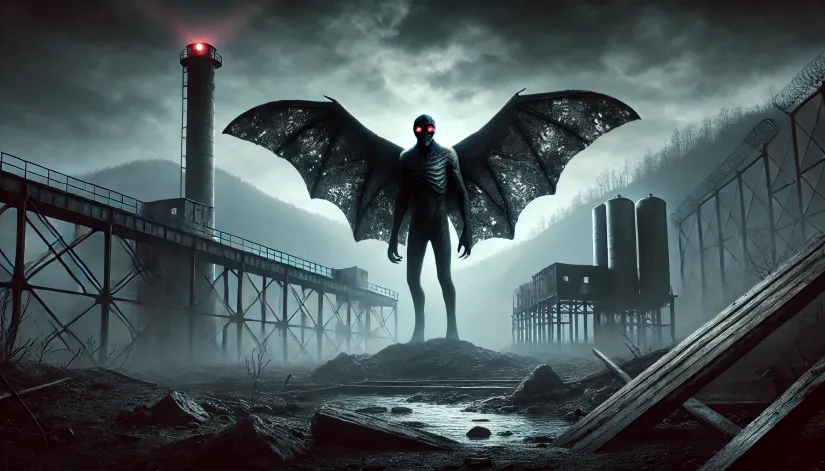
Physical Description and Behavior
According to witnesses, the Mothman is a humanoid figure standing between 6 and 7 feet tall, with impressive dark—grayish or black—and leathery (like those of giant bat) wings that spawn about 10 feet.
Its most recognizable feature? Those glowing red, almost hypnotic eyes.
Linda Scarberry described the creature’s head as being “sunken into its chest,” giving it an almost headless appearance. She also described Mothman as quite agile and fast, able to rise vertically like a helicopter.
Other witnesses mentioned seeing the Mothman flying at low altitudes or perching on trees and rooftops.
Mothman’s behavior was also erratic. Based on testimonials, the creature was particularly attracted to headlights and often chased cars. It would swoop over vehicles, hover above the treetops, and emit a loud, high-pitched screech that many compared to brakes or metal scraping against metal.
Theories and Possible Explanations
Theories about what the Mothman could be are numerous. These ideas range from biological explanations to supernatural and paranormal ones.
Here, we break down the most well-known Mothman theories:

The Sandhill Crane Theory
The “Sandhill Crane Theory” was suggested by wildlife experts shortly after the initial Mothman sightings in 1966. The idea was that witnesses saw a large bird (most likely a sandhill crane or a great blue heron).
Sandhill cranes can grow up to 4 feet tall, with wingspans of up to 7 feet. They also have distinctive red markings around their eyes, which could easily be perceived as glowing in the right light conditions.
Given the remote and dark conditions of the TNT area, it is plausible that a bird wandering out of its natural habitat could have been mistaken for something more menacing.
Recommended: 2024’s Best Mothman Costume Ideas: DIY, Cosplay, Kids, and More
The great blue heron is another possibility, with a height of up to 4.5 feet and a wingspan that can reach nearly 6 feet. Great blue herons love water, and since Point Pleasant is essentially on the riverbank of the Ohio River, such birds were not uncommon.
Is it a valid theory? Yes and no.
A crane could match the descriptions witnesses provided. Especially under low-light conditions, which could lead to exaggerated size and feature perceptions.
However, this theory doesn’t account for certain behaviors described by witnesses. For instance, how could a cane keep up with a speeding car?
UFOs and Extraterrestrial Connections
Why the extraterrestrial link? Because during the same period, multiple UFO sightings were reported in the Point Pleasant. Mysterious lights, strange flying objects, and even encounters with unknown beings.
A significant figure in this theory is Indrid Cold, or “The Grinning Man,” who was reportedly encountered by Woodrow Derenberger on November 2, 1966, in Mineral Wells, West Virginia—just days before the first Mothman sightings.
Derenberger claimed that Cold communicated with him telepathically and identified himself as being from another planet.
This bizarre encounter—combined with similar sightings of Cold in the region—has led many to believe there could be a link between Indrid Cold and the Mothman. Perhaps both were alien visitors of interdimensional beings acting as scouts or harbingers of greater mysteries?
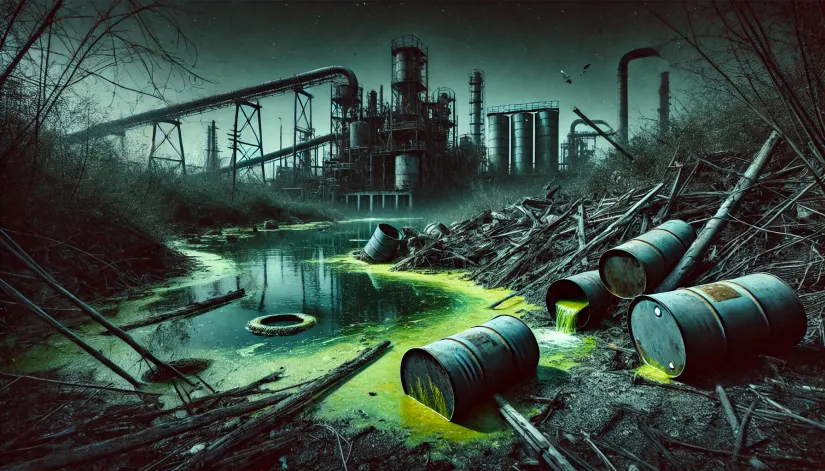
The TNT Area Mutation Theory
The TNT area’s wartime history plays a central role in some theories, too.
This site was used to manufacture munitions during World War II. However, dangerous chemicals (such as TNT and other byproducts) were stored improperly, leading to chemical contamination that has persisted for decades. How do we know that? Because of the many documented reports of leaks into nearby ponds and soils.
Related: 16 Lesser-Known Mothman Facts: From Curses to UFO Connections
Could these pollutants have mutated local wildlife, creating a creature like the Mothman?
The hypothesis focuses on the idea that local wildlife could have been exposed to these chemicals, leading to mutations. The abandoned structures and the environmental damage make this explanation plausible. Especially given that other strange wildlife sightings have been reported in the area over the years.
Some even claim that the eerie glowing eyes could have resulted from radiation or other environmental contaminants affecting an animal’s physiology.
The Curse of Chief Cornstalk
Here’s a more crazy theory: the Mothman is somehow linked to a 200-year-old curse.
Chief Cornstalk, a Shawnee leader, was betrayed and killed by colonial soldiers at Fort Randolph in Point Pleasant in 1777, along with his son, Elinipsico. According to legend, Chief Cornstalk uttered a curse upon his death, declaring that the land would not find peace for the next two centuries.
So, some locals believe that the Mothman is a manifestation of this curse. A harbinger of misfortune and doom that has haunted the area ever since.
Government Experiment or Military Testing
This theory takes us back to the history of the TNT area. During the 1940s, the site was controlled by the U.S. Army. The place was also packed with all sorts of dangerous chemicals.
So, some theorists believe that Mothman could have resulted from a secret government experiment involving radiation. Or perhaps some sort of biological experiment.
Either way, according to this theory, the Mothman might have been a classified project gone wrong. A mutated test subject or a government operative in high-tech gear.
The idea was supported by rumors of underground tunnels and hidden research facilities in and around the TNT area. And, with the Cold War beginning shortly after World War II, many speculate that experimentation continued as part of clandestine efforts related to military technology and biological warfare.
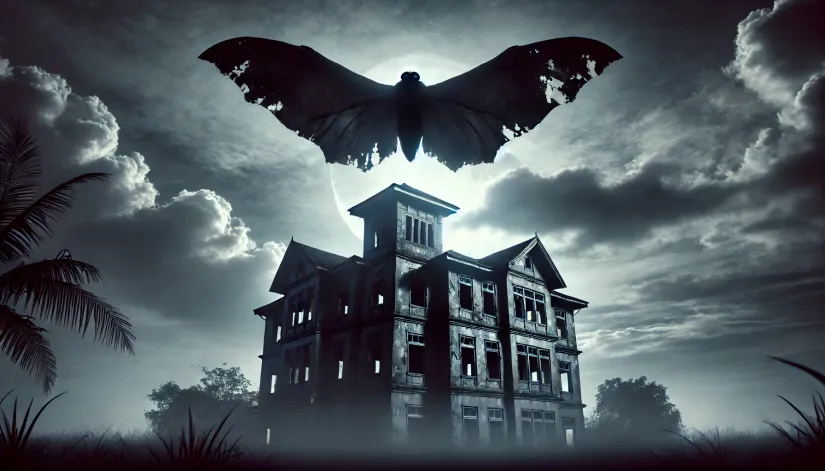
Interdimensional Being or Time Traveler
Another theory suggests that the Mothman may have been an interdimensional being or a time traveler. What’s this based on?
Well, for starters, many witness testimonials claim that the creature appeared and disappeared almost instantly, suggesting that it was not subject to the physical limitations of other animals.
Next, the intense dread felt by those who allegedly encountered the Mothman may also suggest the presence of something not from this world.
Mass Hysteria and Psychological Projection
After the Scarberry-Mallette sighting hit the news, Point Pleasant was caught up in an atmosphere of fear. People began interpreting everyday things—like birds, noises, or shadows—as something far more terrifying.
And, the collapse of the Silver Bridge seemed to confirm their worst fears, retroactively giving the Mothman a role as a dark omen. That’s textbook mass hysteria and psychological projection.
Two great examples of confirmed mass hysteria include the Salem Witch Trials of 1692 and the 1938 War of the Worlds radio broadcast.
In Salem, a small Puritan community in Massachusetts was overtaken by fear of witchcraft, leading to the wrongful persecution and execution of several individuals.
The frenzy started with a few young girls claiming to be possessed and accusing others of witchcraft, which quickly spiraled into panic.
The second example is the 1938 War of the Worlds broadcast, narrated by Orson Welles. The radio drama, which depicted a fictional Martian invasion, was mistaken by some listeners as a real news report.
This caused widespread panic, particularly among communities that tuned in late and missed the disclaimers. People fled their homes and reported seeing Martian invaders, even though the entire scenario was fictional.
However, this theory, too, does have its limitations. Many witnesses provided consistent and vivid descriptions of the Mothman, even when they had no apparent prior knowledge of other sightings.
Additionally, some experienced physical symptoms (such as nausea or intense fear) that they associated with their encounters. These details make it difficult for us to believe that mass hysteria alone could explain all the Mothman events.
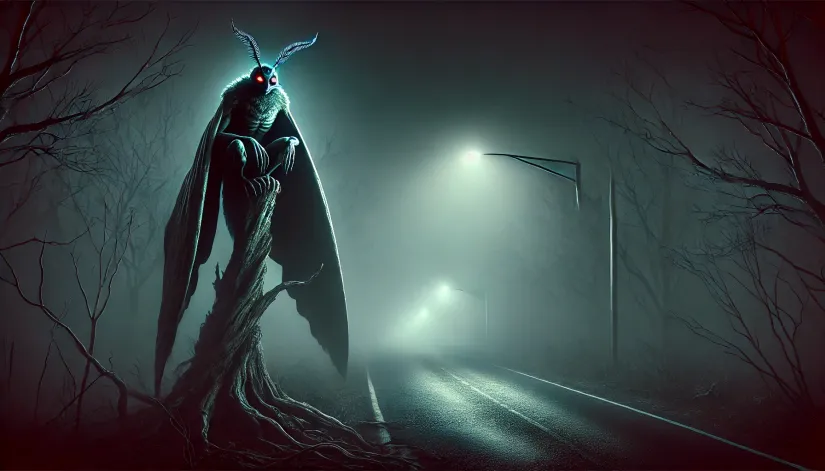
Mothman’s Legacy
Regardless of what it was, the Mothman has left an indelible mark on both Point Pleasant and American pop culture.
John Keel’s book “The Mothman Prophecies“ (1975) played a significant role in cementing the creature’s place in modern folklore. The book later inspired a 2002 film of the same name, starring Richard Gere, which popularized the legend on a national scale.
Locally, Point Pleasant has fully embraced its eerie visitor. The Mothman Festival, held annually since 2002, draws thousands of tourists and cryptid enthusiasts to the town. The event includes guest speakers, themed merchandise, and tours of the famous TNT area.
Visitors can also explore the Mothman Museum, which houses artifacts, newspaper clippings, and witness accounts, celebrating the legend’s impact on the community.
Not to mention the Bob Roach’s Mothman statue that stands proudly in the town square—a metallic tribute to the cryptid that has put Point Pleasant on the map.
Our Take
The SpookySight comprises people with years of experience researching, documenting, and investigating the paranormal. Yet, the Mothman is one of those mysteries that still puzzle us.
We believe no single explanation perfectly fits everything that happened in Point Pleasant between 1966 and 1967. None. Not the misidentified or mutated animal, secret experiments, or mass hysteria.
It’s clear that the people of Point Pleasant were genuinely terrified by what they experienced. The consistency and sheer number of sightings suggest that at least some of these encounters were real—far beyond just tall tales or misunderstandings. There’s a lot more going on here.
And then there are the odd details. Like the strange “Men in Black” that people said visited them afterward. They wore clothing and drove cars that looked brand new, even though they seemed to be from the 1940s.
It’s details like this that make us think there’s more to the story—something we still haven’t quite figured out.
Who or what was the Mothman? We don’t know, and I don’t think anyone really does. But maybe, just maybe, there are still things out there we can’t comprehend. Or we are not supposed to understand… Yet.

